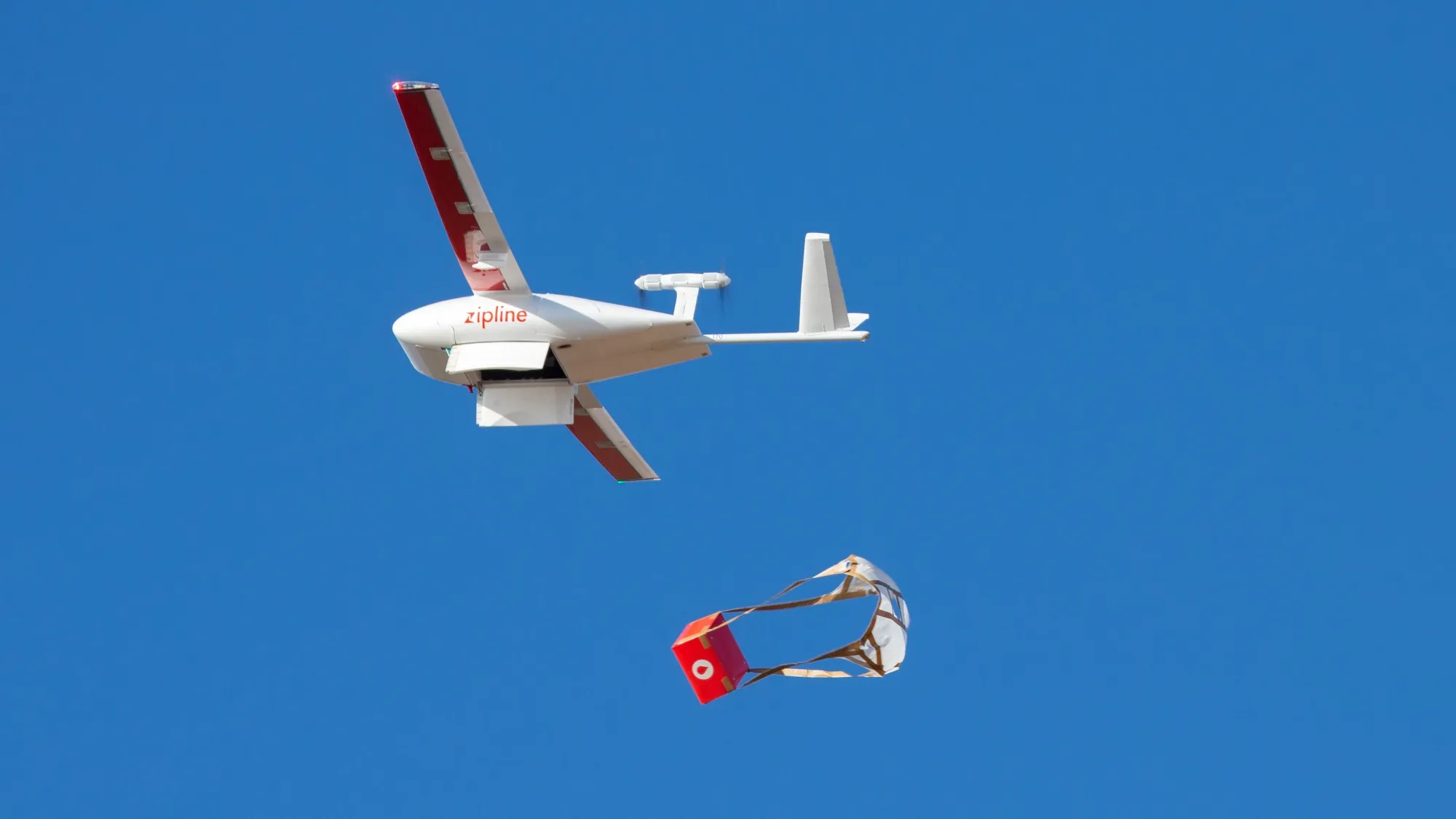Image by Zipline Inc.
Innovative Approaches to Healthcare Challenges
Imagine living in a remote area where reaching a hospital takes hours—or even days. Now, imagine that lifesaving medical supplies could reach you in mere minutes. Thanks to drones, this vision is becoming a reality.
According to UNICEF, over 2 billion people globally lack access to essential medical supplies. This staggering figure underscores the need for innovative solutions. Drones are stepping in to bridge this gap, offering speed, precision, and accessibility that traditional transportation methods often cannot provide.
From delivering blood supplies to aiding disaster relief efforts, drones have become a versatile and affordable answer to some of healthcare’s most pressing challenges. These flying machines are not just symbols of technological progress; they represent hope for countless underserved communities around the globe.
Revolutionizing Remote Healthcare
One of the most significant advantages of drone technology is its ability to navigate challenging environments where traditional transportation methods fall short. In countries with mountainous terrain, poor road networks, or isolated islands, drones provide a lifeline.
Organizations like Zipline have pioneered drone delivery networks in countries like Rwanda and Ghana. These drones deliver blood, vaccines, and essential medicines to remote clinics, often in under an hour. In Rwanda alone, Zipline’s drones have completed over 200,000 deliveries.
Help isn’t just on the way—it’s arriving faster than ever.
Cost-Effectiveness and Sustainability
Have you ever thought about how much it costs to transport medical supplies?
While the initial investment in drone technology may seem high, the long-term cost savings are substantial. A study conducted by the World Bank revealed that drone deliveries could reduce logistical expenses by up to 50% in some regions.
Additionally, drones powered by renewable energy sources, such as solar-powered batteries, enhance sustainability. This reduces the carbon footprint associated with traditional delivery methods, aligning with global goals for eco-friendly healthcare innovations.
For low-resource settings, drones are a game-changer—affordable and reliable.
Enhancing Emergency Response Efforts
Emergencies demand immediate action. Natural disasters, outbreaks, or conflict zones often render traditional transportation unusable. Drones, however, can navigate these obstacles effortlessly.
During the COVID-19 pandemic, drones delivered PPE kits and transported test samples in India and Ghana. Their ability to operate autonomously reduced exposure risks for healthcare workers.
Imagine a drone delivering antibiotics to a disaster zone faster than any vehicle could manage. Now imagine the lives saved because of it.
Expanding Vaccine Accessibility
Have you ever wondered how vaccines get to the most remote places on Earth?
Cold chain logistics is a major challenge. Drones equipped with temperature-controlled compartments are solving this issue by safely delivering vaccines to hard-to-reach areas.
In Vanuatu, UNICEF used drones to transport vaccines to remote islands, ensuring children received life-saving immunizations. This method bypassed the logistical hurdles of traditional delivery and highlighted the role of drones in equitable healthcare access.
According to Dan Gagnon, vice president of global marketing for UPS Healthcare, “This program paves the way for drones to become a meaningful link within highly-specialized cold chain logistics.”
With drones, no place is too far.
Bridging Gaps in Routine Healthcare
It’s not just emergencies—drones are changing routine healthcare, too. Consistent access to medications, prenatal supplements, and diagnostic samples improves patient outcomes while reducing strain on healthcare systems.
For example, in Malawi, drones have been deployed to transport blood samples from rural clinics to centralized laboratories for HIV testing. This process, which once took days, now happens in hours.
For remote areas, drones mean fewer shortages and better care.
Future Opportunities and Challenges
Emerging advancements like increased payload capacity and AI-driven navigation promise to make drones even more impactful. Imagine drones delivering entire vaccine batches or mobile health units to remote villages.
Of course, challenges remain—regulatory hurdles, infrastructure needs, and high initial costs. But as more governments and nonprofits collaborate, these barriers are being steadily addressed.
The Future of Drone-Delivered Healthcare
Drone technology is redefining the possibilities of healthcare delivery. By overcoming logistical challenges, drones are not only transforming healthcare systems but also saving lives. Affordable, scalable, and innovative, drones are a testament to what can be achieved when technology meets humanitarian needs.
As the world continues to prioritize healthcare equity, drones offer a glimpse into a future where no one is beyond the reach of quality medical care. Through continued investment and collaboration, we can ensure that this life-saving technology becomes a cornerstone of global healthcare delivery.



No responses yet